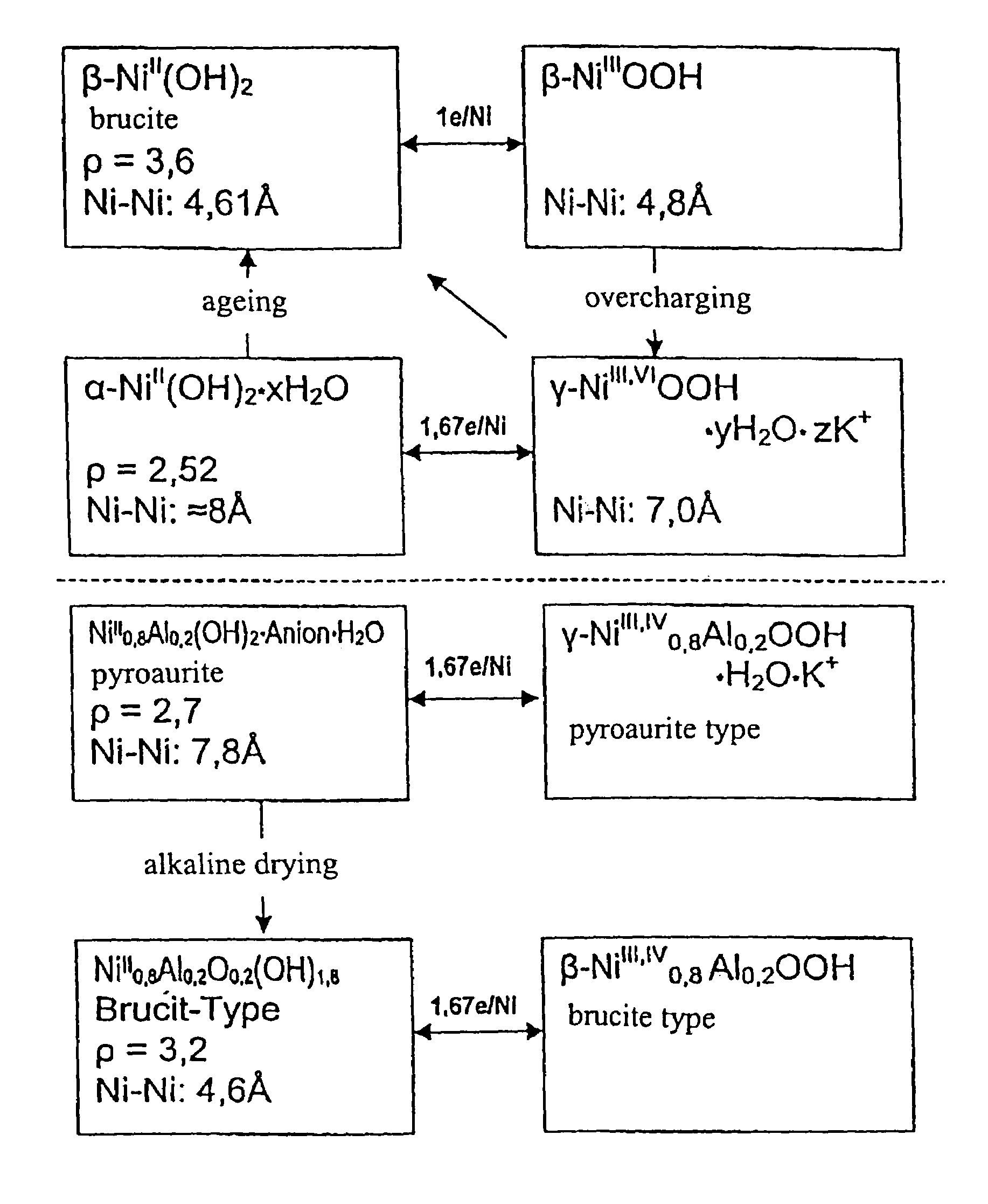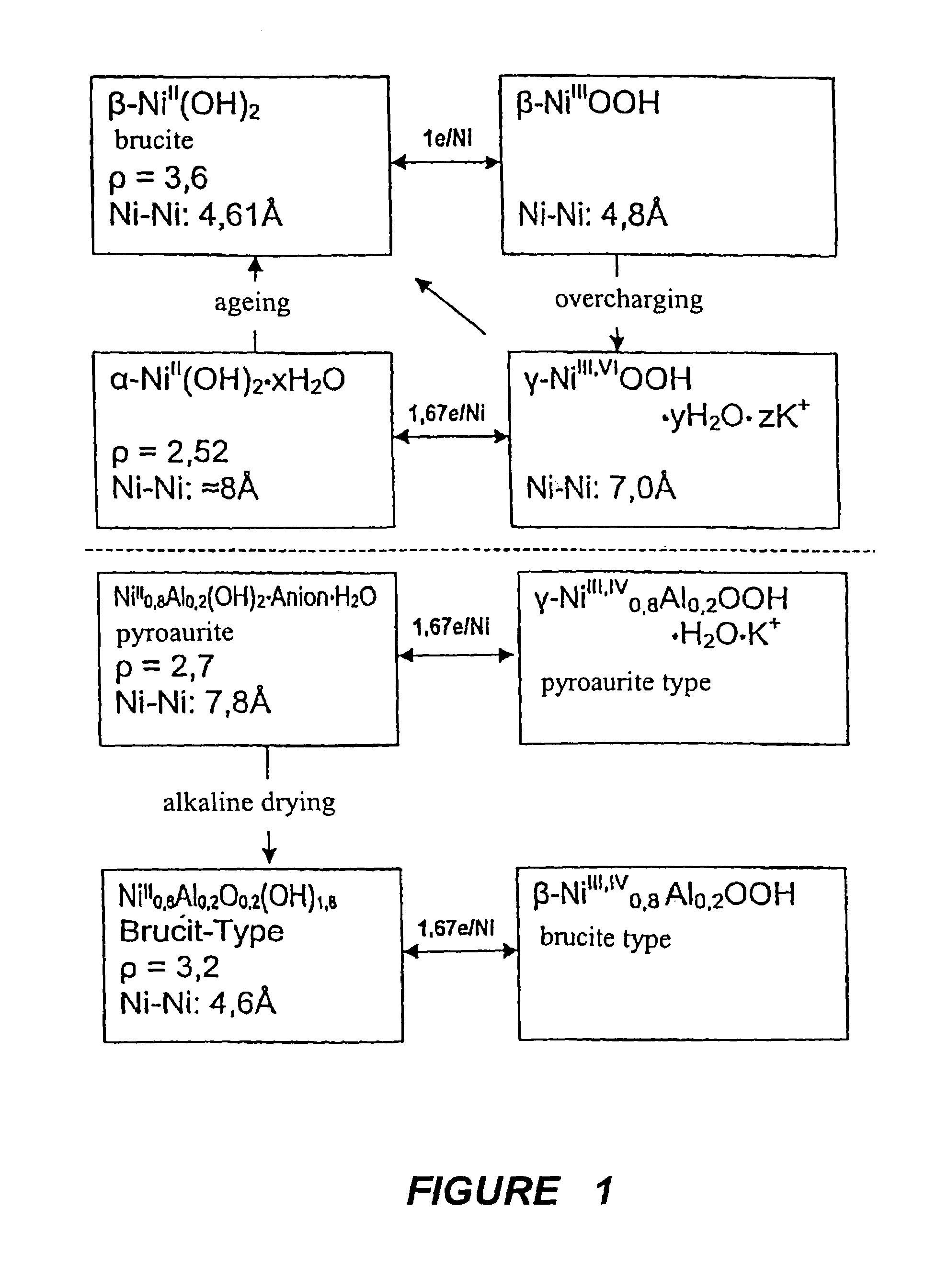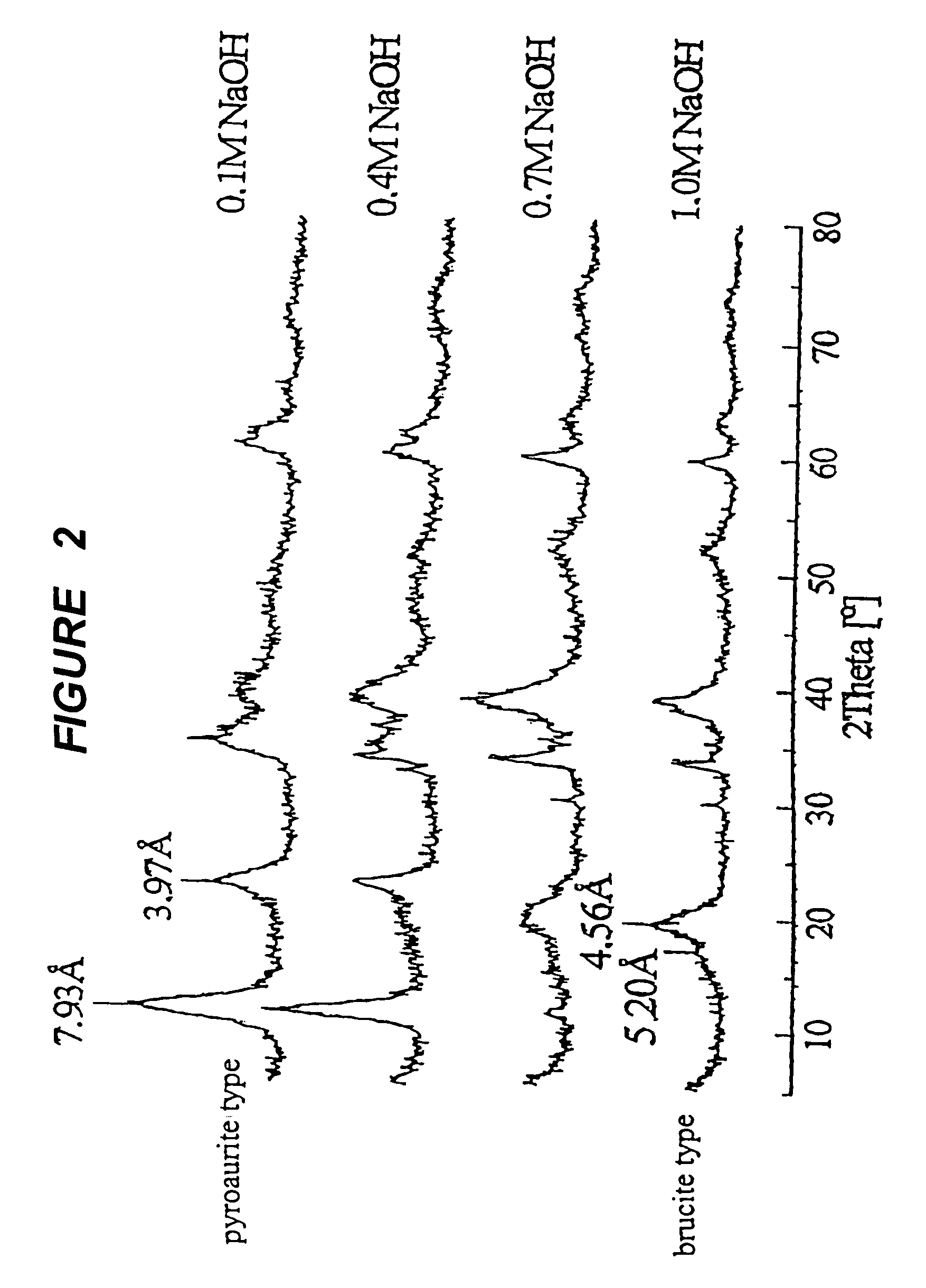Active material for rechargeable batteries
a rechargeable battery and active material technology, applied in the direction of nickel accumulators, cell components, nickel compounds, etc., can solve the problem that the 1.67-electron step cannot be used industrially, and achieve the effect of reducing the spacing between the layers and increasing the storage density
- Summary
- Abstract
- Description
- Claims
- Application Information
AI Technical Summary
Benefits of technology
Problems solved by technology
Method used
Image
Examples
examples
a) Production
[0029]Co-precipitation of the substituted nickel hydroxides is performed by introducing the mixed metal salt solution dropwise into an initial mixture of constant pH value. The composition of the metal salt solution, the equalizing liquor and the initial mixture is described here in relation to the example of precipitation of 0.125 mol of a nickel hydroxide of the metal ion composition Ni4Al0.75Co0.25 at a precipitation pH value of 12.5. The composition of the metal salt solution is modified appropriately for other metal ion compositions. With this batch size, approximately 10 g of dried hydroxide are obtained.[0030]1. Salt solution: Total metal ion concentration 0.5 M[0031]26.28 g NiSO4·6H2O (=0.10 mol Ni2+)[0032]12.48 g Al2(SO4)3·18H2O (=1.88·10−2 mol Al3+)[0033]1.76 g CoSO4·7H2O(=6.25·10−3 mol Co2+)[0034]demineralized water to make up to 250 ml[0035]2. Equalizing liquor: Hydroxide ion concentration 1.0 M[0036]10 g NaOH pellets (99.5%)[0037]demineralized water to make...
PUM
| Property | Measurement | Unit |
|---|---|---|
| temperatures | aaaaa | aaaaa |
| temperatures | aaaaa | aaaaa |
| temperatures | aaaaa | aaaaa |
Abstract
Description
Claims
Application Information
 Login to View More
Login to View More - R&D
- Intellectual Property
- Life Sciences
- Materials
- Tech Scout
- Unparalleled Data Quality
- Higher Quality Content
- 60% Fewer Hallucinations
Browse by: Latest US Patents, China's latest patents, Technical Efficacy Thesaurus, Application Domain, Technology Topic, Popular Technical Reports.
© 2025 PatSnap. All rights reserved.Legal|Privacy policy|Modern Slavery Act Transparency Statement|Sitemap|About US| Contact US: help@patsnap.com



